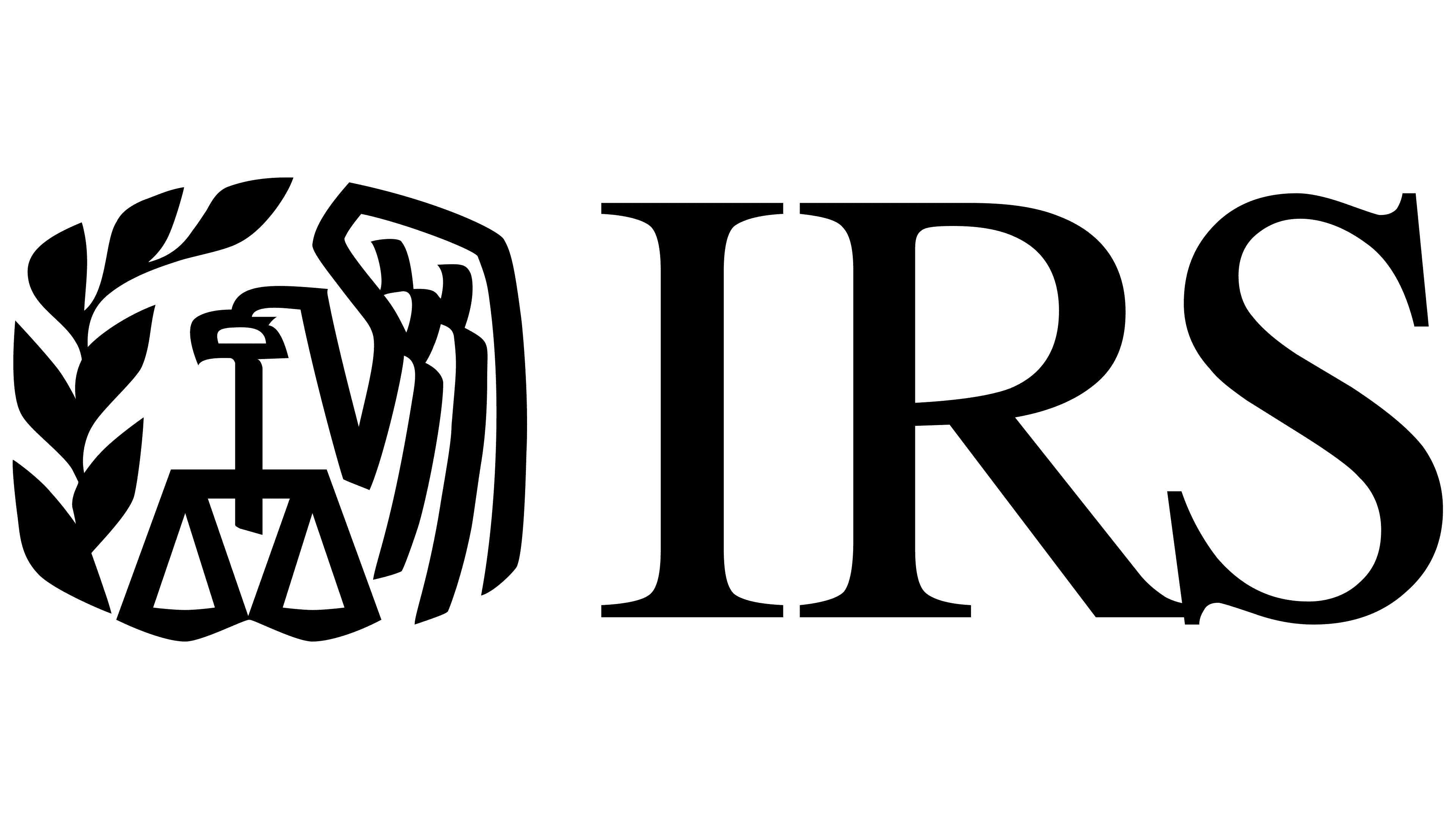






5-Star Service, Trusted & Loved by Hundreds
How the Process Works
Your Appraiser Search Ends Here
Your Appraiser Search Ends Here
.avif)

Nationwide Coverage – Appraisals Anywhere in the US

Get it done Onsite or Online

Any Asset, Covered

Defensible for Any Purpose
View all Locations
The scope of a personal inventory appraisal is extensive, covering a wide array of items that hold both monetary and sentimental value. Professional appraisers conduct a detailed examination of each piece, considering factors such as condition, age, rarity, and market demand. This thorough approach ensures an accurate and objective valuation that reflects the true worth of personal possessions.
The process begins with an initial consultation, where the appraiser discusses the specific items to be evaluated and the intended purpose of the assessment. Trained experts then meticulously inspect each item, utilizing specialized knowledge, market research, and comprehensive databases to determine its precise value. The result is a comprehensive report that includes detailed descriptions, high-quality photographs, and a carefully calculated market value.
Key benefits of a personal inventory appraisal extend beyond simple monetary assessment. The documentation provides crucial protection for insurance purposes, helping individuals ensure adequate coverage for their valuable possessions. It also plays a vital role in financial planning, estate management, and maintaining an organized record of personal assets. Whether preparing for unexpected circumstances or simply seeking a clear understanding of personal property value, this professional assessment offers peace of mind and financial clarity.
Ultimately, a personal inventory appraisal represents a strategic approach to understanding and protecting one's personal belongings, providing valuable insights that can inform important financial and personal decisions.
General personal property appraisers offer broad evaluations of household items and personal belongings, providing a comprehensive overview of total property value. These professionals are versatile and can handle a wide array of items from furniture to general collectibles.
Specialized appraisers delve into specific domains with deep expertise. Art appraisers meticulously analyze artistic works, considering factors like provenance, artist reputation, and current market trends. Jewelry appraisers focus on intricate details of precious stones and metalwork, assessing quality, craftsmanship, and current market valuations.
Collectible specialists bring nuanced understanding to unique item categories, whether evaluating vintage coins, rare sports memorabilia, or historic artifacts. Motor vehicle appraisers examine classic and contemporary vehicles, taking into account condition, restoration quality, and market demand.
Some appraisers concentrate on niche markets like musical instruments, vintage toys, or antique furniture. These experts possess deep knowledge of historical context, manufacturing techniques, and market dynamics specific to their area of specialization.
Real estate personal property appraisers bridge the gap between physical assets and property valuation, assessing items typically included in residential or commercial property transactions. Their expertise ensures a comprehensive understanding of an item's value within a broader context.
Selecting the right type of appraiser is crucial for obtaining accurate and reliable valuations tailored to specific needs, whether for insurance purposes, estate planning, or potential resale.
Insurance preparedness stands as a primary benefit, ensuring accurate coverage for cherished and valuable items. By establishing precise valuations, individuals can protect themselves against potential loss, securing appropriate compensation in unexpected circumstances.
Tax planning represents another significant advantage. Detailed appraisals become essential documentation for charitable donations, potentially maximizing tax deductions while maintaining precise financial records. For items exceeding specific valuation thresholds, professional appraisals provide critical substantiation for tax authorities.
Estate planning gains remarkable clarity through comprehensive personal inventory assessments. Families can navigate inheritance challenges more smoothly, understanding exact asset values and facilitating equitable distribution. This proactive approach minimizes potential disputes and provides transparent guidance for future generations.
During significant life transitions like divorce or asset redistribution, professional appraisals offer neutral, fact-based valuations. These objective assessments help reduce emotional complexity by providing clear, quantifiable information about personal property worth.
For collectors and owners of unique items, appraisals illuminate potential resale opportunities. Understanding market values empowers strategic decisions about liquidation, preservation, or potential investment opportunities.
Beyond immediate financial implications, personal inventory appraisals create lasting documentation. These comprehensive records serve as valuable references, tracking asset evolution and providing historical context for future financial planning and personal asset management.
Ultimately, a personal inventory appraisal transcends simple valuation, offering strategic insight, financial protection, and peace of mind across various life circumstances.
The most common online appraisal approach involves submitting high-resolution photographs of items alongside comprehensive documentation. Clients can provide detailed descriptions, purchase histories, and relevant provenance information electronically, enabling appraisers to conduct thorough assessments without physical presence.
For those seeking a more interactive experience, live video consultations provide an alternative. Using platforms like Zoom or Skype, property owners can engage directly with qualified appraisers, showcasing items in real-time and facilitating immediate professional evaluation. This method allows for nuanced discussions about item condition, authenticity, and specific characteristics that might impact valuation.
Digital appraisal processes offer significant advantages in terms of convenience and efficiency. Clients can schedule assessments according to their personal timelines, eliminating traditional scheduling constraints. Whether managing a small collection or comprehensive personal inventory, online appraisals accommodate diverse needs while maintaining professional standards.
Modern technological approaches ensure accurate, reliable assessments that adhere to industry professional guidelines. The ability to conduct comprehensive evaluations remotely represents a significant advancement in personal property valuation methodologies.
Inventory appraisals are quoted on a project-by-project basis. These appraisals can be completed with in-person and online methods; in-person appraisals will sometimes include travel fees, when applicable. For some projects, when necessary, the price can be determined ahead of time, in line with the specifications of the work.
What Makes Personal Inventory Appraisals Essential?
Personal inventory appraisals are critical tools for effectively managing and understanding valuable assets. These professional assessments offer comprehensive insights into personal property, enabling informed decision-making for individuals and families.
Key Benefits of Personal Inventory Appraisals
- Insurance Protection
Professional appraisals help determine precise insurance coverage by accurately valuing personal items. This ensures owners receive appropriate compensation in case of loss, theft, or damage, preventing potential financial shortfalls.
- Strategic Estate Planning
Comprehensive asset valuations provide clarity during estate planning, reducing potential inheritance disputes. Detailed documentation helps honor personal wishes and creates transparent guidelines for asset distribution.
- Tax Strategy Optimization
Accurate property valuations can significantly impact tax planning, offering insights into potential estate and capital gains tax implications. Precise appraisals help individuals make strategic financial decisions while maintaining legal compliance.
- Market Value Understanding
Appraisal processes include in-depth market trend research, providing current value perspectives. This knowledge empowers owners to make informed choices about selling, donating, or retaining specific assets.
- Legal Documentation
Formal appraisal reports serve as critical documentation for various legal scenarios, including divorce settlements, partnership divisions, and inheritance proceedings.
The Broader Impact
Personal inventory appraisals transcend mere financial assessment. They provide peace of mind, strategic insight, and a comprehensive understanding of personal asset value. By leveraging professional appraisal services, individuals can protect their financial interests and make confident, informed decisions about their valuable possessions.
Types of High-Value Personal Possessions
When it comes to personal inventory appraisals, understanding the types of high-value possessions that may require assessment is crucial. A personal inventory appraisal provides a comprehensive overview of your assets by evaluating the current market value of significant items in your possession.
Key Categories of High-Value Personal Possessions
Fine Art
Art pieces represent a nuanced category of valuable possessions, including:
- Paintings
- Sculptures
- Installations
Critical valuation factors include provenance, artist reputation, and current market trends. Professional appraisers carefully assess these elements to determine precise market value.
Antiques and Collectibles
This category encompasses items with distinctive characteristics:
- Antiques: Items at least 100 years old
- Collectibles: Rare coins, stamps, vintage toys, memorabilia
Value is determined by rarity, condition, and current market demand.
Jewelry
Jewelry valuation considers multiple dimensions:
- Intrinsic material value (precious metals, gemstones)
- Craftsmanship
- Historical significance
- Sentimental importance
Luxury Items
High-end personal possessions include:
- Designer handbags
- Luxury watches
- Premium electronics
Valuation depends on brand reputation, condition, and market demand.
Furniture and Décor
Valuable furniture categories include:
- Mid-Century Modern pieces
- Art Deco designs
- Unique, handcrafted items
Collector interest and historical significance significantly impact valuation.
Musical Instruments
High-end musical instruments offer unique valuation opportunities:
- Rare violins
- Vintage pianos
- Exceptional guitars
Maker reputation and instrument condition are critical assessment factors.
Professional appraisal provides essential insights for insurance documentation, estate planning, and potential sales. An expert assessment helps you understand the true value of your personal inventory with precision and confidence.
How Does a Professional Personal Inventory Appraisal Work?
A professional personal inventory appraisal is a meticulous process designed to accurately assess the value of personal items, ranging from cherished antiques and rare collectibles to everyday household goods. This comprehensive approach helps individuals gain valuable insights into their assets.
The Personal Inventory Appraisal Process
Initial Consultation
The appraisal journey begins with a detailed consultation between the appraiser and client. During this critical first step, the appraiser:
- Gathers essential information about the items
- Explores the history and significance of each piece
- Requests supporting documentation such as:
- Original purchase receipts
- Previous appraisal reports
- Detailed photographs
Comprehensive Item Examination
A thorough, multi-step evaluation follows the initial consultation. Professional appraisers conduct an in-depth analysis that includes:
- Physical inspection of each item
- Extensive market research
- Detailed assessment of key valuation factors:
- Rarity
- Current condition
- Historical provenance
- Market demand
Comprehensive Reporting
After completing the examination, the appraiser develops a comprehensive report that includes:
- Detailed item descriptions
- High-quality photographs
- Estimated fair market value
- Contextual market trend analysis
- Potential value appreciation or depreciation insights
Professional Standards and Confidentiality
Professional personal inventory appraisals are governed by strict ethical guidelines. Appraisers are committed to:
- Maintaining complete objectivity
- Providing unbiased valuations
- Protecting client confidentiality
- Ensuring accuracy based on expert knowledge
A professional personal inventory appraisal offers more than just monetary valuation—it provides clarity, peace of mind, and a deeper understanding of your personal assets.
Key Factors That Determine Your Items' Worth
Key Factors Influencing Personal Inventory Valuation
Understanding the critical elements that determine an item's worth is essential for making informed decisions about personal property. These factors provide insights into potential value, whether for insurance, selling, or estate planning purposes.
1. Item Condition
The physical state of an item is a primary value determinant. Key condition considerations include:
- Absence of damage or wear
- Functional integrity
- Original components and appearance
- Minimal repairs or restoration
Example: A vintage watch with pristine mechanics and minimal surface scratches will typically command a higher valuation than a similar item showing significant wear.
2. Rarity and Uniqueness
Scarcity significantly influences an item's market value. Factors that contribute to rarity include:
- Limited production runs
- Discontinued models
- Unique manufacturing characteristics
- Historical significance
3. Provenance and Historical Context
An item's documented history can dramatically enhance its value. Important provenance elements include:
- Previous notable ownership
- Connection to significant historical events
- Documented lineage of ownership
- Verification of origin
4. Current Market Dynamics
Market trends play a crucial role in determining value. Consider:
- Current collector interests
- Economic conditions
- Seasonal demand fluctuations
- Emerging market preferences
5. Authenticity Verification
Confirming an item's genuine nature is paramount to maintaining its value. Authenticity markers include:
- Original documentation
- Manufacturer certificates
- Expert authentication
- Unique identifying markers
By carefully evaluating these five critical factors, individuals can develop a comprehensive understanding of their personal inventory's potential value and make more strategic decisions about their possessions.
Why Do You Need a Personal Inventory Appraisal?
A personal inventory appraisal is a strategic tool for comprehensively understanding and documenting the value of your personal possessions. By providing detailed insights into your assets, this process offers multiple critical benefits across various aspects of personal financial management.
Key Reasons for Personal Inventory Appraisals
1. Insurance Protection
- Determines accurate replacement cost for personal belongings
- Helps establish appropriate insurance coverage levels
- Protects against potential financial losses from theft, damage, or disasters
2. Estate Planning Clarity
- Creates comprehensive documentation of personal assets
- Facilitates equitable asset distribution among heirs
- Simplifies potential tax calculations and estate settlement processes
3. Strategic Financial Management
- Tracks asset value fluctuations over time
- Supports informed decisions about selling or retaining possessions
- Provides insights for investment and budgeting strategies
4. Tax and Legal Documentation
- Supports potential tax deductions for charitable donations
- Offers verified documentation for legal proceedings
- Ensures compliance with regulatory requirements
5. Personal Empowerment
- Enhances financial transparency
- Provides peace of mind through comprehensive asset understanding
- Enables proactive financial planning
By obtaining a professional personal inventory appraisal, individuals can gain a comprehensive understanding of their assets, protect their financial interests, and make more strategic life decisions.
Getting Ready for Your Professional Assessment
Preparing for a personal inventory appraisal requires strategic planning and careful attention to detail. By following a systematic approach, you can ensure a comprehensive and accurate assessment of your valuable possessions.
Key Preparation Strategies
1. Comprehensive Item Documentation
- Create a detailed, organized inventory of items to be appraised
- Categorize belongings into distinct groups:
- Jewelry
- Antiques
- Collectibles
- Electronics
- Household items
- Ensure no valuable items are accidentally omitted
2. Essential Supporting Documentation
- Collect and organize critical supporting materials:
- Original purchase receipts
- Manufacturer warranties
- Previous professional appraisals
- Historical documentation or certificates of authenticity
- Provenance documentation can significantly impact item valuation
3. Thorough Item Condition Assessment
- Carefully evaluate the condition of each item
- Document specific details such as:
- Visible wear and tear
- Previous repairs
- Potential damage
- Understand that item condition directly influences market value
4. Professional Item Presentation
- Clean items gently without altering their original condition
- Organize items for easy inspection
- Ensure proper lighting and accessibility during assessment
5. Clear Communication
- Discuss specific valuation objectives with your appraiser
- Share any unique background or sentimental information
- Be transparent about your expectations and goals
By implementing these preparation strategies, you'll facilitate a more efficient and precise personal inventory appraisal process, maximizing the potential insight and value of your assessment.
Finding the Right Appraiser: What to Look For
Essential Criteria for Selecting a Personal Inventory Appraiser
Choosing the right appraiser requires a strategic approach to ensure you receive an accurate and comprehensive assessment of your personal belongings.
Professional Qualifications and Credentials
- Verify professional certifications and specialized licenses in appraisal
- Look for membership in recognized professional organizations such as:
- Appraisers Association of America
- International Society of Appraisers
- Credentials demonstrate expertise, ethical standards, and professional commitment
Specialized Experience and Expertise
- Prioritize appraisers with specific experience in your type of inventory
- Consider specialists in specific categories like:
- Fine art
- Antiques
- Collectibles
- Jewelry
- Rare items
- Specialized knowledge ensures more accurate market valuations
Comprehensive Reporting and Methodology
- Request and review sample appraisal reports
- Evaluate report characteristics:
- Depth of research
- Clarity of documentation
- Detailed valuation rationale
- Professional presentation
- Thorough documentation indicates professional rigor
Reputation and Professional Standing
- Conduct comprehensive background research
- Seek validation through:
- Professional references
- Client testimonials
- Online reviews
- Industry recommendations
- Direct client feedback provides authentic insights
Professional Liability and Protection
- Confirm the appraiser carries professional liability insurance
- Insurance demonstrates:
- Professional accountability
- Client protection
- Commitment to ethical practice
- Protects both parties in case of exceptional circumstances
By meticulously evaluating these critical factors, you can confidently select an appraiser who will provide a reliable, accurate, and comprehensive assessment of your personal inventory.
Your Personal Inventory Appraisal Questions Answered
What is a Personal Inventory Appraisal?
A personal inventory appraisal is a comprehensive evaluation of your personal belongings that provides a detailed assessment of their current market value. This professional process involves carefully examining and documenting various personal assets to determine their monetary worth.
Key Reasons to Conduct a Personal Inventory Appraisal
- Insurance Protection: Ensure your belongings are accurately covered and receive fair compensation in case of loss or damage
- Estate Planning: Create a clear understanding of your asset values for inheritance and financial planning
- Relocation Preparation: Gain insights into the value of your personal property during moves or downsizing
- Tax and Charitable Documentation: Obtain precise valuations for tax deductions or charitable donations
The Appraisal Process
Professional appraisers follow a meticulous approach to valuing personal items:
- Comprehensive item examination
- Assessment of condition and historical significance
- Market value research
- Comparative analysis
- Detailed documentation and reporting
Frequency of Appraisals
Experts recommend periodic reassessment of your personal inventory, particularly after:
- Significant life changes
- Major purchases
- Substantial market value fluctuations
- Every 3-5 years for most collections
What Items Are Typically Appraised?
Personal inventory appraisals can cover a wide range of valuable items, including:
- Fine jewelry
- Art collections
- Antiques and collectibles
- High-value furniture
- Rare or vintage items
- Electronics and specialized equipment
By understanding the nuances of personal inventory appraisals, you can make informed decisions about protecting and managing your valuable assets.
Protecting Your Assets: The Long-Term Benefits of Accurate Valuation
Why Accurate Personal Inventory Valuation Matters
Understanding the true value of your personal assets is more than a financial exercise—it's a strategic approach to protecting your financial well-being. Accurate valuation provides critical insights that impact multiple aspects of your financial life.
Key Benefits of Personal Inventory Appraisal
- Financial Security: Precise documentation of your assets' value ensures comprehensive protection and informed decision-making
- Risk Management: Helps you understand potential financial exposures and develop appropriate protective strategies
- Strategic Planning: Enables more accurate financial and personal planning across various life stages
Critical Areas of Impact
- Financial Planning and Insurance
An up-to-date personal inventory appraisal provides essential insights for:
- Determining appropriate insurance coverage
- Preventing underinsurance or overinsurance
- Reducing potential financial risks during claims
- Estate Planning
Precise asset valuation supports:
- Fair distribution among heirs
- Minimizing potential inheritance disputes
- Strategic tax planning
- Real Estate Transactions
Personal inventory appraisals offer advantages in property sales and purchases by:
- Highlighting property asset value
- Supporting negotiation strategies
- Providing transparent asset documentation
Additional Advantages
- Market Awareness: Stay informed about current market trends and asset valuations
- Collector Insights: Understand collection value fluctuations
- Proactive Financial Management: Make informed decisions based on comprehensive asset understanding
An accurate personal inventory appraisal transcends mere documentation—it's a powerful tool for financial empowerment and long-term asset protection. By maintaining current and precise records, you create a foundation for confident financial decision-making.
BEST-IN-CLASS APPRAISERS, CREDENTIALED BY:






.svg)










